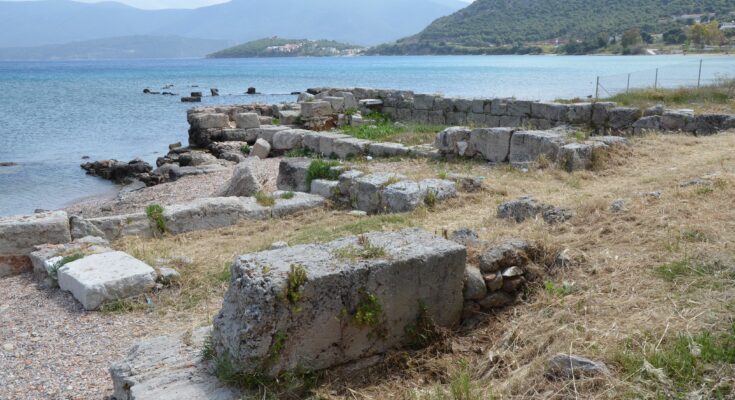A diving expedition in the 2,700-year-old ancient Greek and Roman port city of Parion, in Canakkale in northwestern Türkiye, has discovered a second ancient port in the city.
Excavations have been carried out in the village of Kemer in the Biga district of Canakkale for years, with the aim of uncovering the archaeological wonders of the ancient city of Parion. Given permission by the Ministry of Culture and Tourism, excavations led by Prof. Vedat Keles, Dean of the Faculty of Humanities and Social Sciences at Ondokuz Mayis University, are into their 20th year.
“This harbor, compared to the southern harbor, which served as a commercial port, is slightly smaller and filled with alluvium deposited by the river running through the city. Parion was a legion colony, so there is a possibility that this harbor could have been a military port,” excavation leader Vedat Keles told Arkeonews.
Archaeological work was conducted underwater for the first time this year in Parion, and it was during these excavations that the second ancient port of the city was discovered.
“This is an important source of pride for us. When we look at 20 years, I think that the Parion work has done its part in the past 20 years in terms of excavation, restoration-conservation, publication and training of scientists,” Keles told Arkeonews.
Adding, “This year, we initiated underwater studies. As we all know, Parion is an important port city in the Northern Troas. We already knew that we had a southern port. This is mentioned in ancient sources. We were thinking there could also be a northern port. But this was always a question mark in our minds. With the underwater studies, we have determined that this place is also a port.”
The History of Parion
There has been some debate over the origin of the city’s name, with one suggestion being that it was named after the son of Iason or Demetria from Erythrai, or perhaps Paris, the prince of Troy.
Parion is now understood to have been the largest ancient city within the region, and functioned as an important port used by those in the nearby areas.
In 546 BC, Parion was in the hands of the Greeks, albeit under Persian rule, and in 334 BC, it fell into the hands of Alexander the Great, as a result of his campaign in Asia Minor. Following his death, Parion was invaded and taken over by the Attalid from Pergamon. It was eventually given to the Romans by Attalos III in 133 BC.
Speaking on the nature of the port, Keles told Arkeonews, “However, this port is a little smaller in size than the southern port, which is the trade port, and its interior is filled with alluviums accumulated by the stream passing through the city. Parion is a legion colony. Therefore, there may be a possibility that this place is a military port. The underwater studies we will carry out will give us more detailed information on this issue.”



